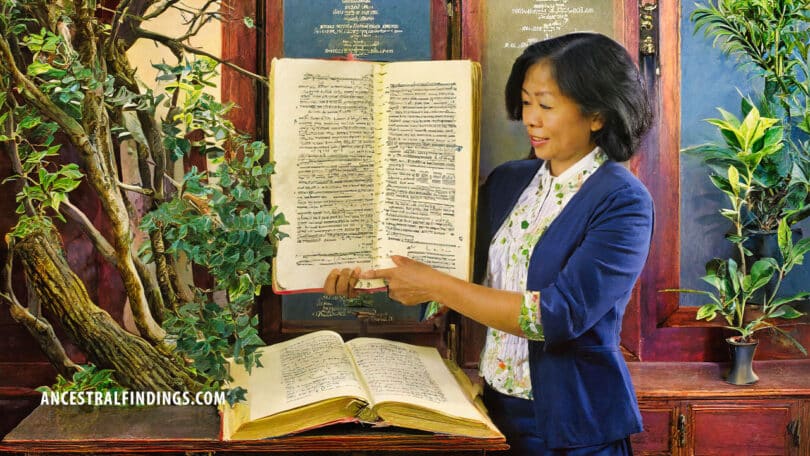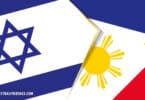For genealogists tracing Filipino ancestry, archives are treasure troves of valuable records that can help piece together family histories. From civil registrations to land records, the Philippine archives hold a wealth of information waiting to be discovered. This guide will help you navigate these resources, making your genealogical journey more efficient and rewarding.
Understanding the Types of Records Available
Before diving into the archives, it’s essential to understand the types of records available and how they can contribute to your research. The most commonly sought records in the Philippines include civil registrations, church records, land titles, and census data. Each type of record provides different insights into your ancestors’ lives and can help fill in the gaps in your family tree.
Civil Registrations:
Civil registrations include birth, marriage, and death certificates, which are vital for building a detailed family tree. These records typically contain information about the individual, their parents, and other important details such as place of birth or marriage.
Church Records:
Church records, particularly from the Catholic Church, are a cornerstone of genealogical research in the Philippines. Baptismal, marriage, and burial records often include detailed information that can connect multiple generations within a family.
Land Records:
Land records are essential for tracing property ownership and understanding your ancestors’ economic status. These records can reveal where your ancestors lived, the size of their landholdings, and even disputes over property.
Census Data:
Census records provide a snapshot of your ancestors’ lives at specific times, including details about family members, occupations, and residences. These records can help track changes in your family’s circumstances over the years.
Where to Access Philippine Archives
Accessing records in the Philippines can be done both online and in person, depending on the type of record and its availability. Here’s a breakdown of where to find these invaluable resources:
National Archives of the Philippines (NAP):
The National Archives is the primary repository of government records, including land titles, notarial documents, and other civil records. While not all records are digitized, the NAP offers both physical access at its main office in Manila and limited online access through its website.
Philippine Statistics Authority (PSA):
The PSA is the go-to source for civil registrations. You can request birth, marriage, and death certificates online through the PSA Serbilis website or visit one of their local offices for in-person requests.
Local Civil Registry Offices:
For more localized records, visit the civil registry office in the town or city where your ancestors lived. These offices often hold older records that might not be available through the PSA.
Diocesan Archives:
Diocesan archives are invaluable for church records. Each diocese in the Philippines has its own archive, preserving records from parishes within its jurisdiction. Some dioceses have begun digitizing their records, but many are only available physically.
Online Resources:
Websites like FamilySearch.org and Ancestry.com have digitized collections of Philippine records, including church and civil documents. These platforms are excellent starting points for genealogists who cannot visit archives in person.
Tips for Efficient Archive Research
Researching in archives can be time-consuming, especially if you’re dealing with older records that may not be well-organized. Here are some tips to make your research more efficient:
1. Prepare in Advance: Before visiting an archive, make a list of the specific records you need. Knowing exactly what you’re looking for will save time and reduce the chances of overlooking important documents.
2. Start Online: Begin your search with online databases and digital records. This can help you gather preliminary information and narrow down the specific documents you need to access in person.
3. Bring Proper Identification: Some archives require identification or proof of research purpose to access certain records. Make sure to bring the necessary documents to avoid any delays.
4. Take Notes and Photos: When you find a relevant document, take detailed notes or photographs (if allowed). This will help you keep track of your findings and ensure that you don’t miss any crucial details.
5. Be Patient: Archival research can be slow, especially when dealing with fragile or poorly preserved documents. Patience is key to uncovering the information you need.Common Challenges and How to Overcome Them
Genealogical research in the Philippines is not without its challenges. Understanding these obstacles and how to overcome them will help you navigate the archives more effectively.
Incomplete or Missing Records:
Records may sometimes be incomplete or missing due to natural disasters, wars, or poor preservation practices. When faced with this challenge, consider alternative sources of information, such as oral histories, land records, or neighboring parishes’ archives.
Language Barriers:
Older records, particularly those from the Spanish colonial period, are often written in Spanish. If you’re not fluent in Spanish, consider enlisting the help of a translator or using online translation tools to decipher these documents.
Varying Quality of Records:
Some records, especially older ones, may be difficult to read due to fading ink or damage. If you encounter a document that is hard to decipher, try adjusting the lighting or magnification. In some cases, archivists may be able to provide assistance or offer alternative copies.
Unlocking the Past Through Philippine Archives
The archives of the Philippines are rich with history, offering countless opportunities to uncover your family’s past. By understanding the types of records available and where to find them, you can navigate these resources with confidence and efficiency. While challenges may arise, the rewards of discovering your ancestral roots make the effort worthwhile.
As you continue your genealogical journey, remember that each record is a link to your family’s history—a piece of the puzzle that brings your ancestors’ stories to life. With patience, preparation, and a little persistence, the Philippine archives will open doors to the past, allowing you to connect with your heritage in meaningful ways.
Read More:
Philippine History and Government by Sonia M. Zaide and Gregorio F. Zaide
This book offers a comprehensive overview of Philippine history, covering crucial periods such as the Spanish, American, and Japanese eras. It’s a valuable resource for understanding how each period influenced the country’s record-keeping practices, essential for genealogists.
The Roots of the Filipino Nation by Onofre D. Corpuz
This two-volume set delves into the historical development of the Philippines, providing insights into the colonial influences that shaped the nation’s genealogy. It’s an excellent resource for those interested in the broader historical context behind the records.
Bound to Empire: The United States and the Philippines by H.W. Brands
This book focuses on the American colonial period in the Philippines and explores how U.S. policies influenced the country’s administrative systems, including record-keeping, which are crucial for genealogical research.
Japanese Pan-Asianism and the Philippines from the Late Nineteenth Century to the End of World War II by Sven Matthiessen
Matthiessen’s work examines the impact of the Japanese occupation on the Philippines, including introducing new record-keeping methods that are valuable for tracing family histories from this era.
Barangay: Sixteenth-Century Philippine Culture and Society by William Henry Scott
This book provides a detailed look into the pre-Hispanic Philippines, focusing on indigenous cultures and societies. It’s an essential resource for understanding the early record-keeping practices in the Philippines.







